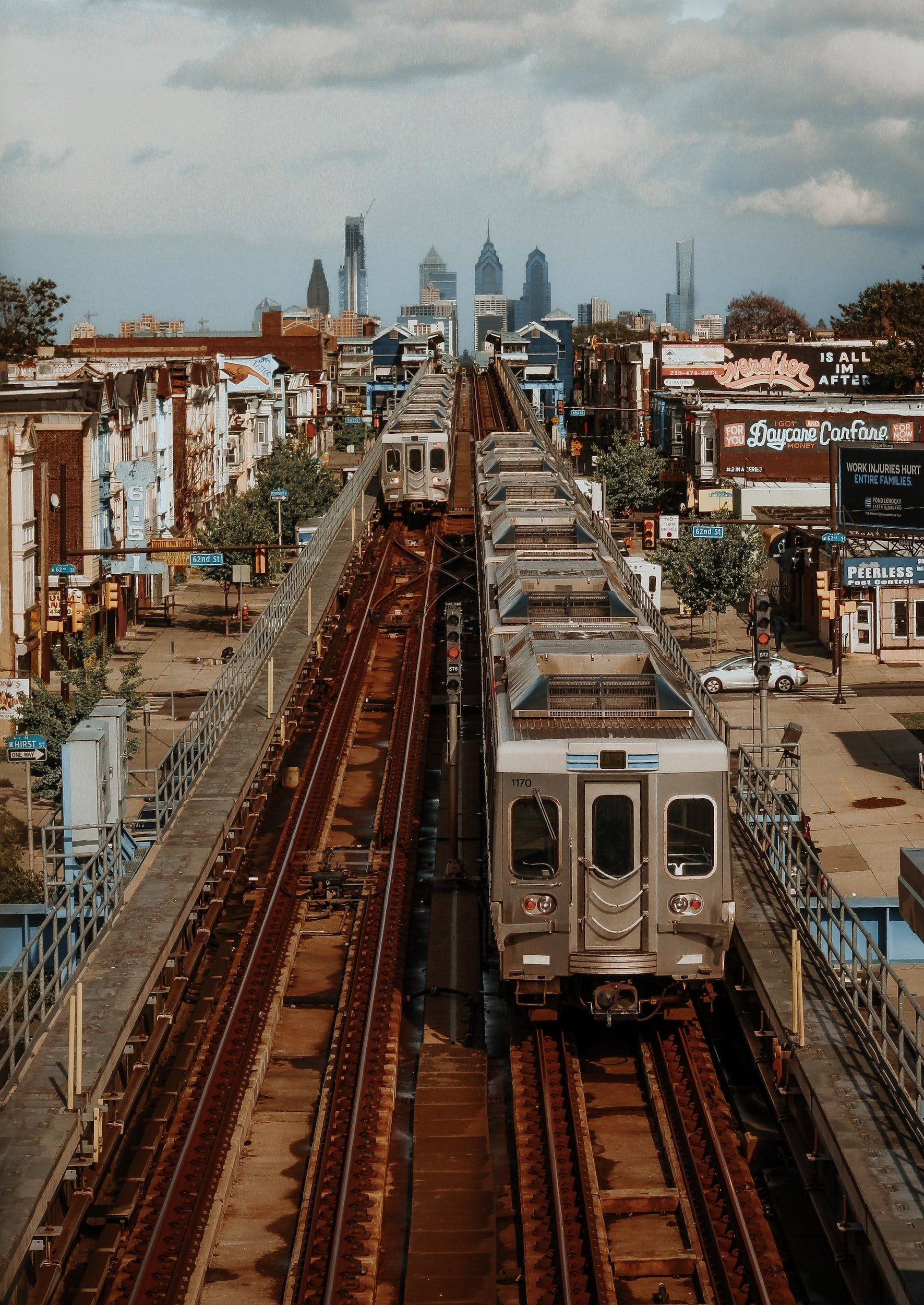
Gentrification is Not Necessarily Turning Black Neighborhoods White
Residents of many American cities have probably noticed that after several decades of poverty, violence, and economic decline, some inner city neighborhoods have recently undergone reinvestment and redevelopment—in short, they have “gentrified.” Broadly defined, gentrification is the transformation of a relatively poor to a relatively wealthy neighborhood through an influx of more affluent residents, usually preceded and followed by financial investments by public or private entities such as development corporations or real estate speculators.

Republicans Will Win a Majority on The San Diego Council – Here is Why
Despite its reputation as a conservative military town, San Diego is today a heavily Democratic city. Indeed, Republicans are now members of a third-party in San Diego, their registration numbers trailing behind independents. Yet in the election this June, I predict that Republicans will win a 5-4 majority on the city council, adding to their current control of the mayor’s office.

Editor's Note: Revisiting Place Matters
Urban Affairs Review recently published a series of articles that reflect on the contribution of Drier, Mollenkopf, and Swanstrom's book Place Matters: Metropolitics for the 21st Century.

The City of Ferguson: Between a Rock and a Hard Place
On January 27th the federal Department of Justice (DOJ) issued a Consent Decree to correct abusive police practices in Ferguson. A few weeks later the Ferguson City Council voted 6-0 to amend the decree – knowing full well that DOJ would not accept any changes. Sure enough, the next day Attorney General Loretta Lynch announced that the federal government was suing to the City of Ferguson to force compliance.

The Homegrown Downtown
You visit Asheville, NC, perhaps, for the lovely fall foliage along the Blue Ridge Parkway, or because you’ve read about North Carolina’s top tourist attraction, the Biltmore Estate. But you quickly find that this city of 85,000 also has a growing arts district and a dynamic downtown whose galleries, restaurants and microbreweries have earned praise as a “best beer city”, “great food destination,” and even “coolest city”. U.S. cities in all regions and of all sizes have been seeking ways to turn moribund downtowns into economically vibrant and culturally rich destinations; do Asheville’s political and economic leaders have the “secret sauce”?

Urban Governance and the American Political Development Approach
Urban political authority is complicated. To explain who governs our cities, we first need to acknowledge that our answers will vary across time: a city that looks like a beacon of pluralism today may have been governed by a closed elite only a few decades ago. We also need to acknowledge that political authority varies across cities: take a snapshot of North American urban governance at any point in history and you will find a range of political institutions, embodying widely varying authority structures, in different cities across the continent.

What Happened in Sandtown-Winchester?
The death of Freddie Gray in April 2015 sparked unrest in Baltimore and drew international attention to issues of race, police brutality and urban poverty. Efforts to understand what happened have led some to look at Sandtown-Winchester, the poor and segregated neighborhood where Freddie Gray lived. Two decades ago, Sandtown was the site of one of the largest community development efforts in U.S. history.

Urban social problems and marginalized populations in post-socialist transition societies
Urban social problems and marginalized populations in post-socialist transition societies: Perceptions of the city centre of Prague, the Czechia. The study of social problems and marginalization in urban space has a long tradition in Western scholarly research. However there have been far fewer studies of these issues in the countries of Central and Eastern Europe (CEE). Moreover most authors use only statistical data to examine them. Thus we have decided to offer a perspective on the perception of social problems and marginalization in post-socialist urban societies.

Ignorance Is Bliss
In the last 20 years, school choice options have proliferated in many cities and states. No city exemplifies this move to school choice more than New Orleans. In the aftermath of Hurricane Katrina in 2005, school reformers dismantled the low-performing school district and replaced it primarily with autonomous charter schools. As of 2014, over 90% of its public school students were in a charter school – the highest proportion for a major city in the nation.

State dominance in urban redevelopment
Although Gaojiabang is a very special case and residential upgrading similarly exists in other Chinese urban neighbourhoods, this paper argues that it is not the change from residential to office uses that leads to the question of gentrification in urban China. Rather, the case reflects the role of the state and its dominance in the redevelopment of Chinese cities, though market-based property development is used as an instrument for realizing this process. In a sense, the property transactions underlying gentrification are not the determinant here.

The Relationship Between Climate Change Policy and Socioeconomic Changes in the U.S. Great Plains
One of the most fascinating puzzles associated with climate change policies in the United States over the past two decades has been the emergence of states and cities as policy leaders. In developing policy approaches to many previous environmental concerns such as clean air and water, species protection, and the clean-up of hazardous waste, the federal government took the lead by establishing regulatory standards and guidelines that shaped subsequent city and state responses. Sub-national governments could certainly adopt their own policies that went beyond these standards, but this tended to be atypical in practice.

A Strategic Framework for Building Civic Capacity
Cities today face various wicked problems that prompt fundamental disagreements and distrust within the body politic. Land use, transportation, housing, education, and other complex issues confound policy makers’ abilities to agree on the contours of problems, much less devise and implement effective solutions that satisfy citizens. Because they are so intractable, wicked problems require extraordinary politics that build “civic capacity” by blending conflict and cooperation to foster both learning and bargaining. When successful, such initiatives produce shared understandings and coordinated efforts by both elite and grassroots actors to address a multi-faceted public problem that transcends the capacities of individual organizations to address alone.

Neighborhood Revitalization and the Anchor Institution
At the outset, Penn and the School District were committed to PAS, yet they could not envision a day when their classrooms would be at capacity and parents would be clamoring to claim slots for their children. To the contrary, they were holding their breath and hoping this seedling of revitalization would take hold. More than fifteen years after the implementation of the WPI, the neighborhood has changed dramatically.

Extension of State-led Growth Coalition and Grassroots Management
The theories of growth machine and urban regime have constrained explanatory power in social contexts outside the United States, partially because they presume a specific set of sociopolitical conditions in which urban growth coalitions are embedded, and have paid insufficient attention to the relations between macro conditions and growth coalitions. This study intends to enhance our understanding of the variation of growth politics in urban settings of transitional societies by paying critical attention to the sociopolitical contexts of growth politics.

“Us Up Here and Them Down There”
Despite the fact that social mix is an essential component of urban policies in Western Europe, it remains unclear at what spatial scale housing diversification programs may be most effective. When people with different backgrounds, household compositions, and lifestyles live in close proximity to one another, the emergence of close social ties is not always guaranteed.

Explaining ‘power to’
From the urban governance perspective, although not free from structural constraints, local actors can exercise a significant influence on urban policies and affect the life conditions of residents. Within this paradigm, the urban regime theory, developed from the works of Elkin and Stone, has placed the decisional power of urban policy-makers in the foreground. From the urban regime perspective, not only can local actors systematically affect the context through their public decisions but, in particular situations, stable and enduring governing coalitions can even change the whole consolidated policy mix of a city through the implementation of a new policy agenda.

The Formation of Business Improvement Districts (BIDs) in Low-Income Immigrant Neighborhoods of Los Angeles
Business improvement districts, or BIDs, are local organizations that aim to revitalize commercial areas. BIDs are self-help organizations in which property or business owners collect funds to improve and promote their retail corridors. The collected funds are used for street cleaning, beautification, or security reinforcement in a designated boundary. BIDs have clearly demonstrated benefits for promoting commercial areas over the last two decades. Large and small, BIDs have multiplied rapidly: from about 400 in 1999 to about 1,000 in 2010 across the United States. BIDs are sometimes referred to as community improvement districts (CIDs), special improvement districts (SIDs), or special services areas (SSAs) contingent on the state legislature.

Gender, Political Rhetoric, and Moral Metaphors in State of the City Addresses
Politicians and leaders use metaphors and frames in political communication to provide citizens with meaning, persuade, and promote emotional reactions. At the same time, a large body of scholarship documents the propensity for female leaders to “speak in a different voice” when in political office. Research to date on policy metaphors, however, rarely compares male and female leaders’ use of metaphors or evaluates the use of these metaphors in local politics.

Housing Choice Voucher Holders and Neighborhood Crime
Efforts to “deconcentrate poverty” through the Housing Choice Voucher (HCV) program could potentially produce unintended adverse consequences for the neighborhoods into which HCV holders move. The most salient concern expressed has been reputed upsurges in violent and property crime. To date, there is limited credible evidence on this issue, as scholars must successfully confront two fundamental challenges.

The Relationship between Population Size and Contracting Out Public Services
Evidence from a quasi-experiment in Danish Municipalities